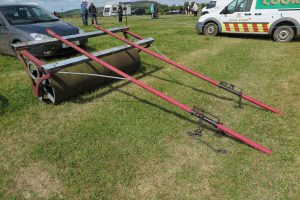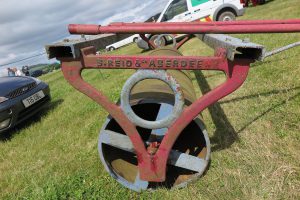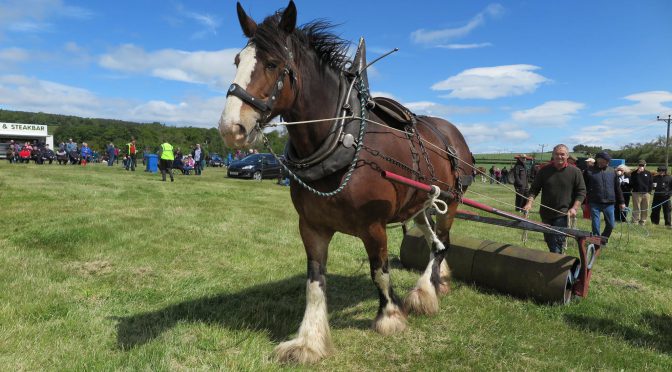 Rolling land was an important part of the process of sowing the spring crops. In 1889 Henry Stephens stated that “the common land roller is an implement of simple construction, the acting part of it being a cylinder of wood, of stone, or of metal. Simple, however, as this implement appears, there is hardly an article of the farm in which the farmer is more liable to fall into error in its selection.” Stephens noted that the roller should be of the proper weight and diameter.
Rolling land was an important part of the process of sowing the spring crops. In 1889 Henry Stephens stated that “the common land roller is an implement of simple construction, the acting part of it being a cylinder of wood, of stone, or of metal. Simple, however, as this implement appears, there is hardly an article of the farm in which the farmer is more liable to fall into error in its selection.” Stephens noted that the roller should be of the proper weight and diameter.
Of the different materials for making rollers, Stephens judged that “wood, which is frequently employed for the making of land-rollers, may be considered as least adapted of all materials for the purpose. Its deficiency of weight and liability to decay under it objectionable. Stone, though not deficient in weight, possesses the one marked disadvantage of liability to fracture. This of itself is sufficient to place stone rollers in a doubtful position as to fitness. Iron and steel are undoubtedly the most appropriate of all materials for this purpose.”
 A number of the implement and machine makers in Scotland manufactured rollers. In 1900, for example, they were made by Kemp & Nicholson, Stirling, A. Newlands & Son, Implement Works, Linlithgow, John Scoular & Co., Stirling, and Thomas Hunter & Sons, Maybole.
A number of the implement and machine makers in Scotland manufactured rollers. In 1900, for example, they were made by Kemp & Nicholson, Stirling, A. Newlands & Son, Implement Works, Linlithgow, John Scoular & Co., Stirling, and Thomas Hunter & Sons, Maybole.
John Scoular exhibited 4 field rollers at the Highland Show of 1900 at Stirling. They ranged from 6 to 7 feet by 18 or 21 inches, and sold at between £6 10s and £9 9s each. In that year, the rollers of Thomas Hunter & Sons, were of malleable iron, and in two sizes, 6 feet by 30 inches and 6 feet by 33 inches, and cost either £10 15s or £11 15s.
There were other types of rollers. They included consolidating land rollers and pulverising land rollers.
For more information on rollers, see Henry Stephens, 1889: https://archive.org/stream/cu31924000275812#page/n261/mode/2up
The photographs of the Ben Reid of Aberdeen rollers were taken at the Fife Vintage Agricultural Machinery Club rally, June 2015.
